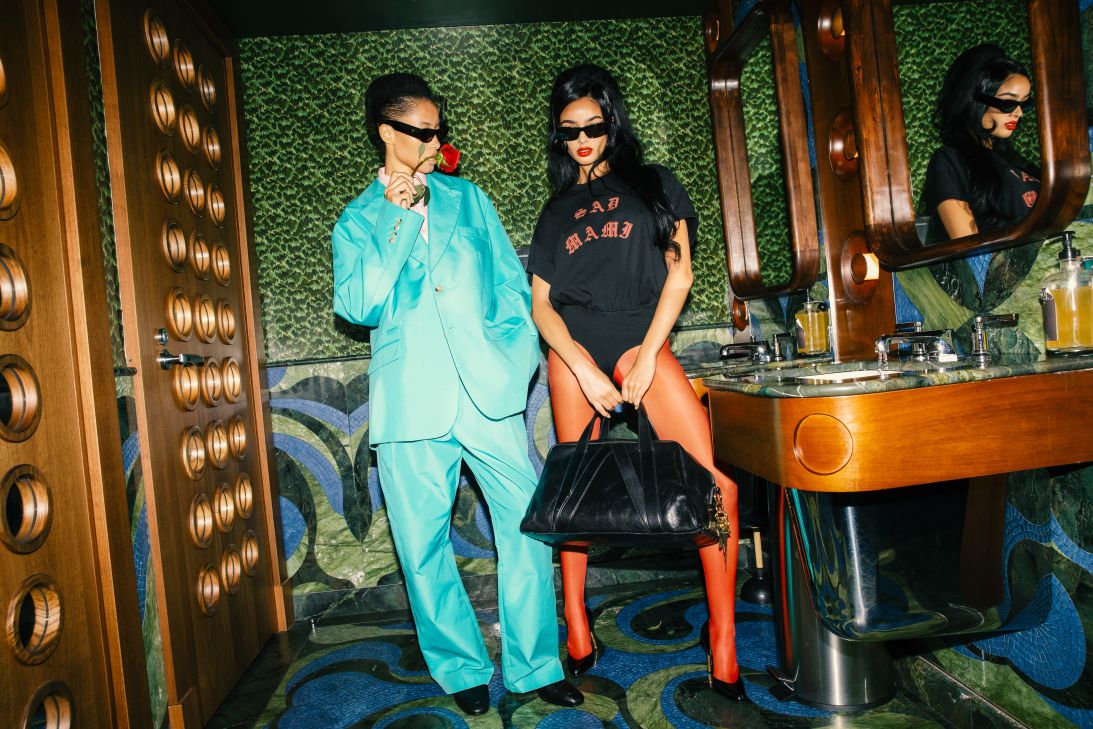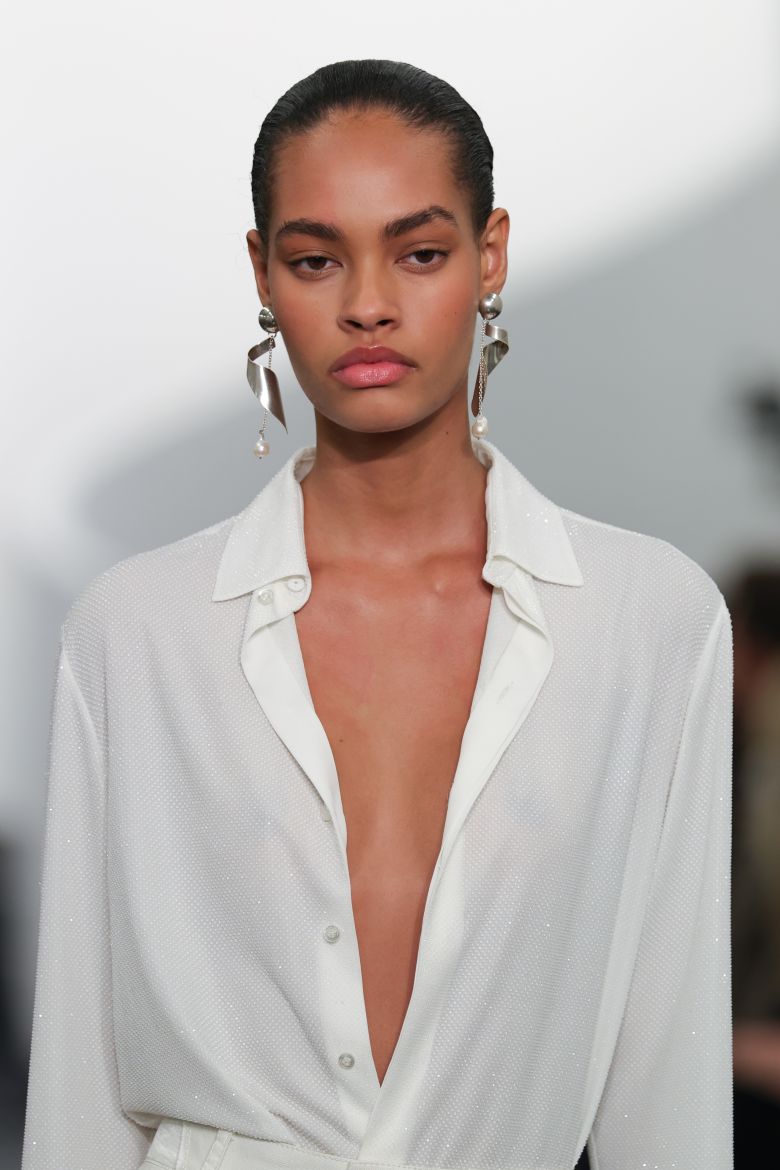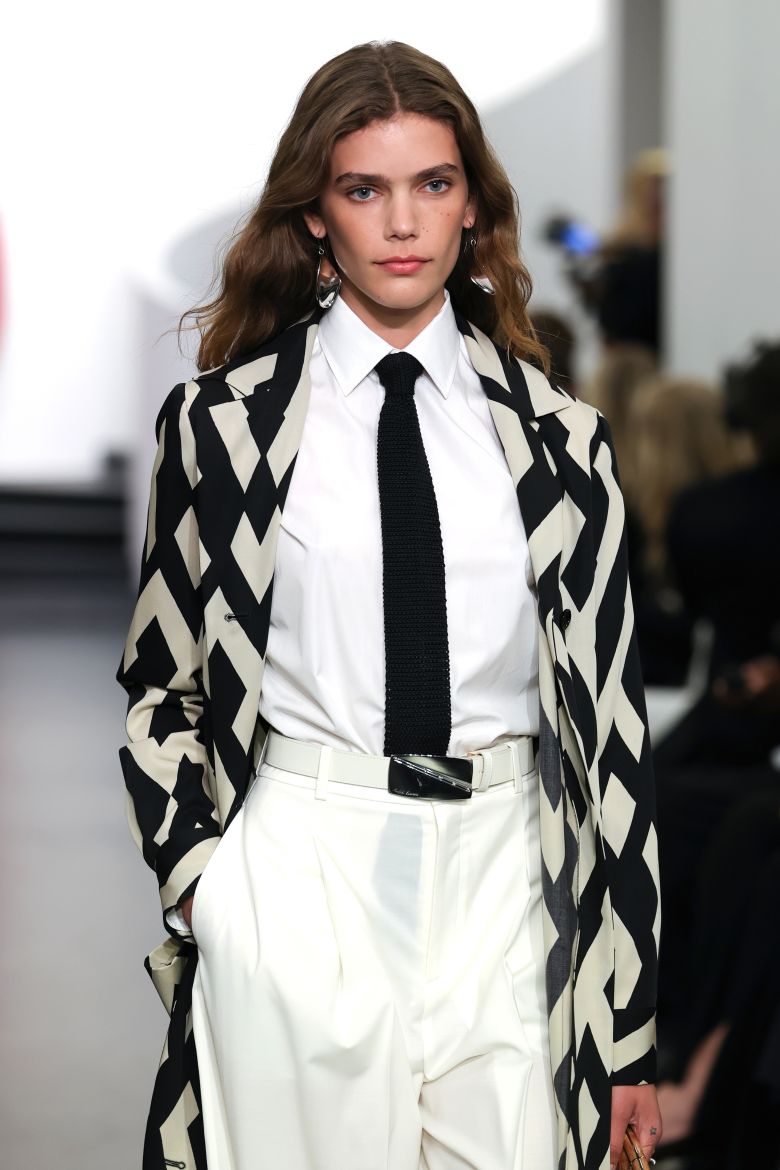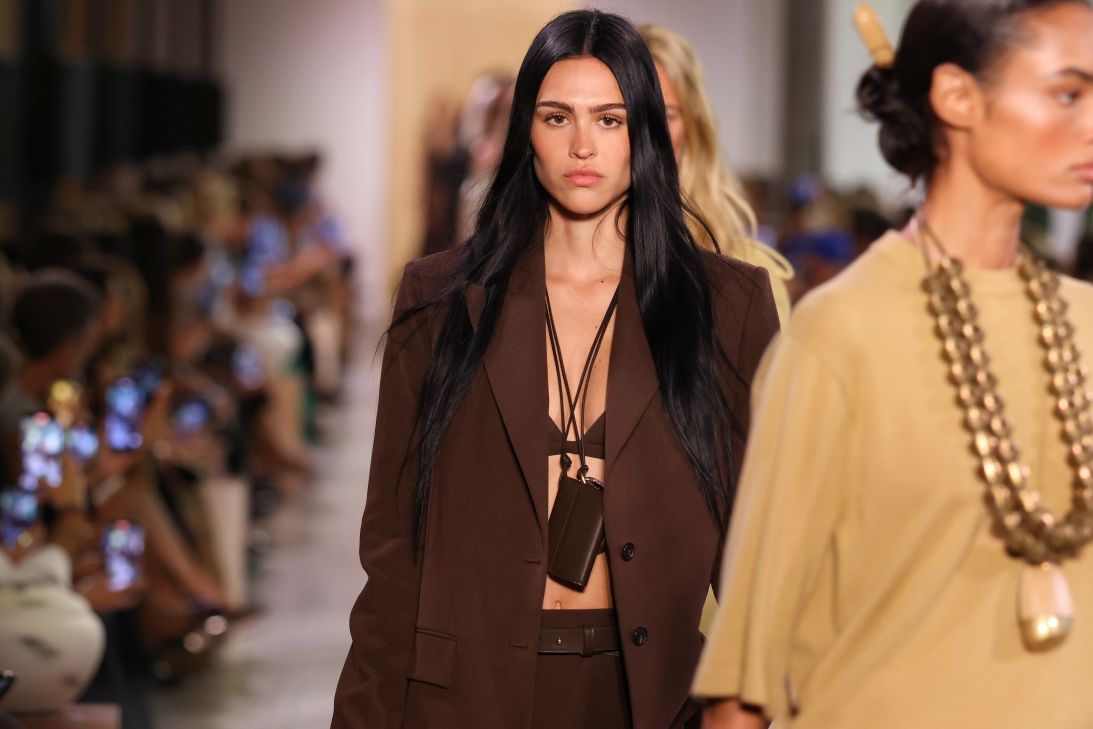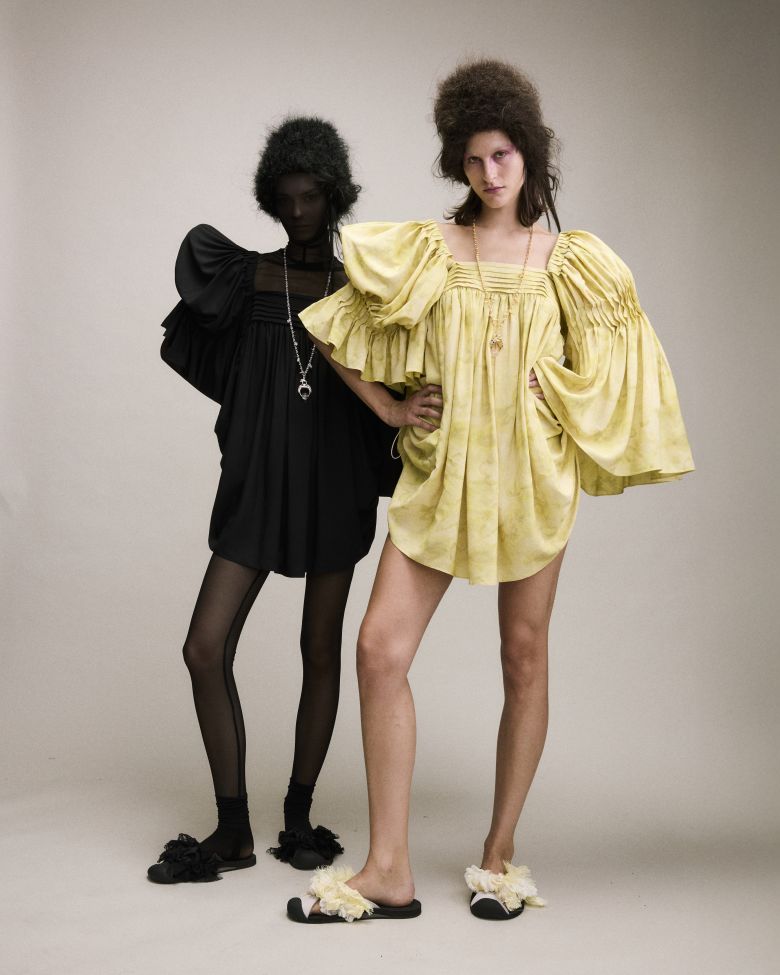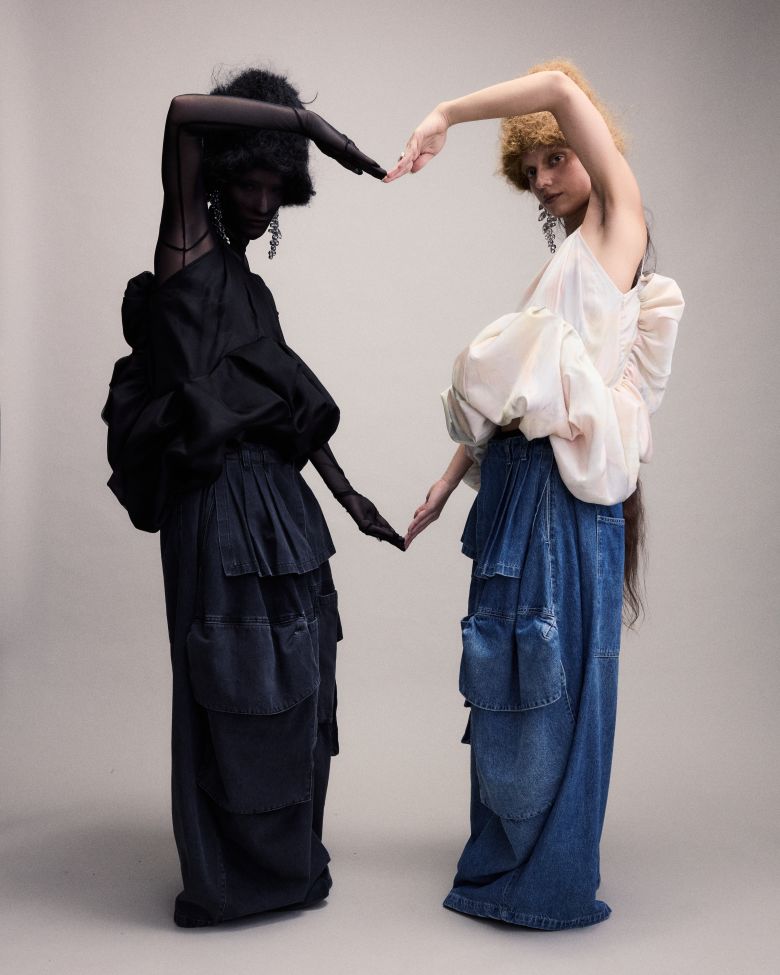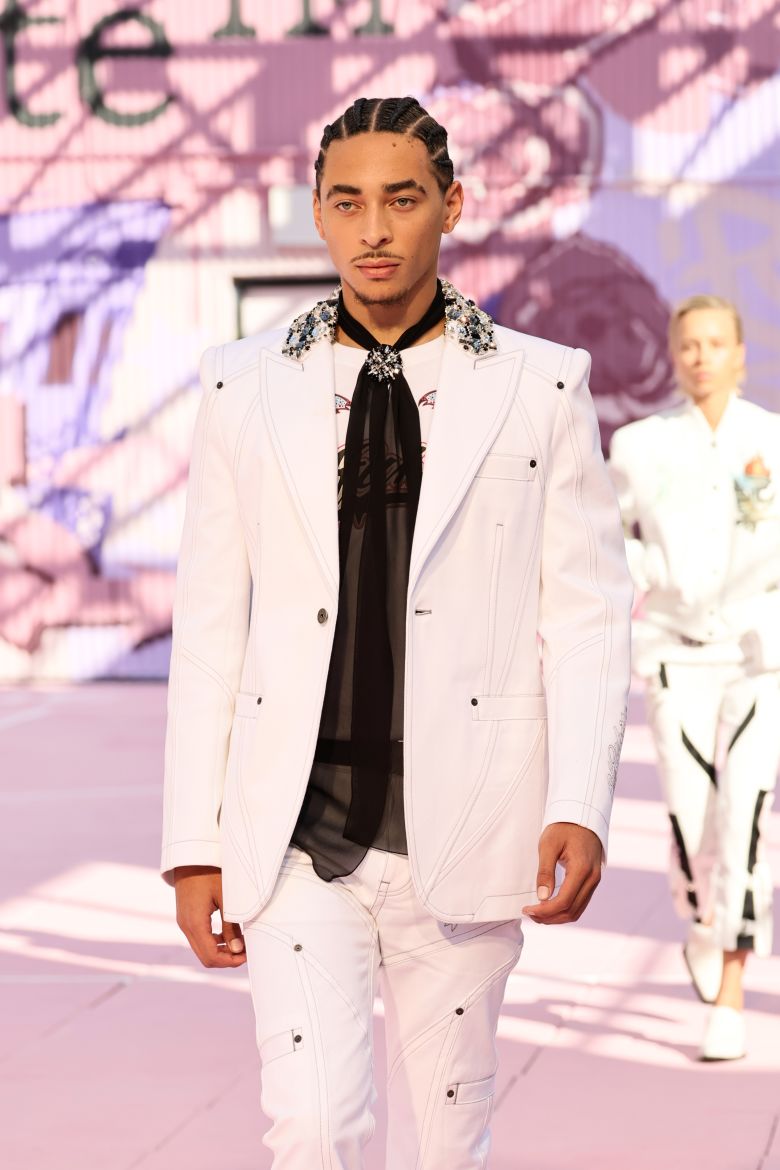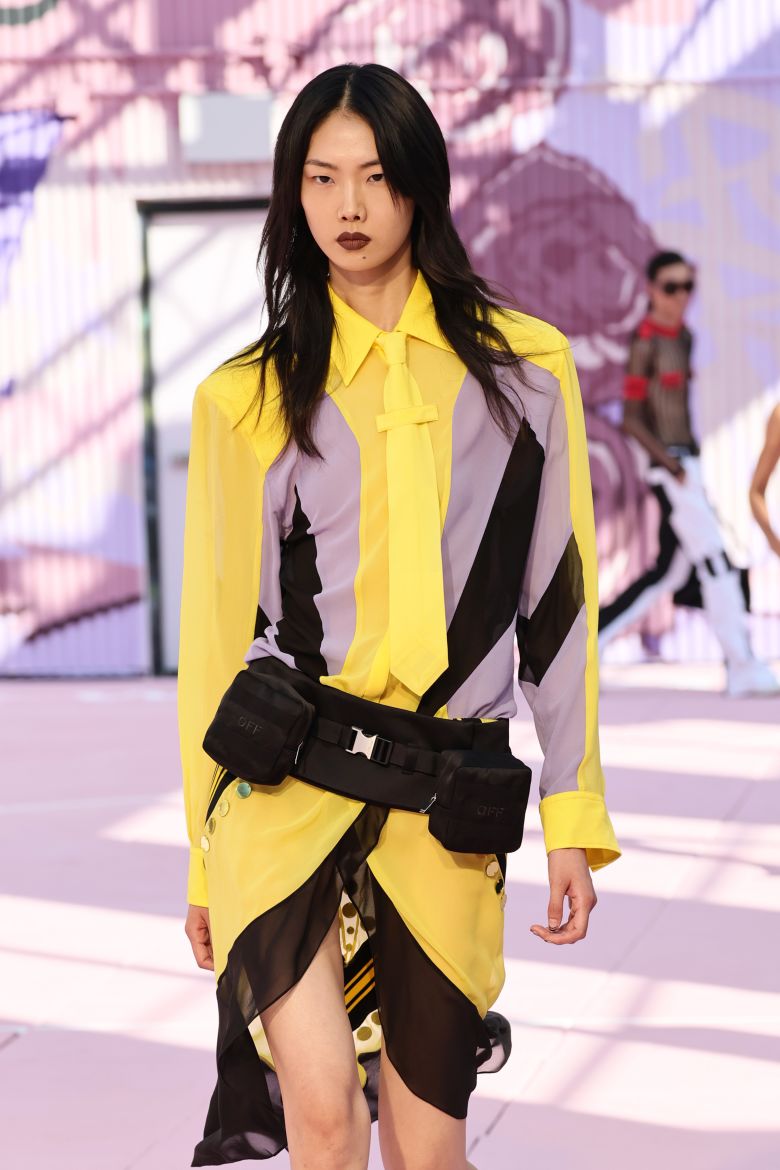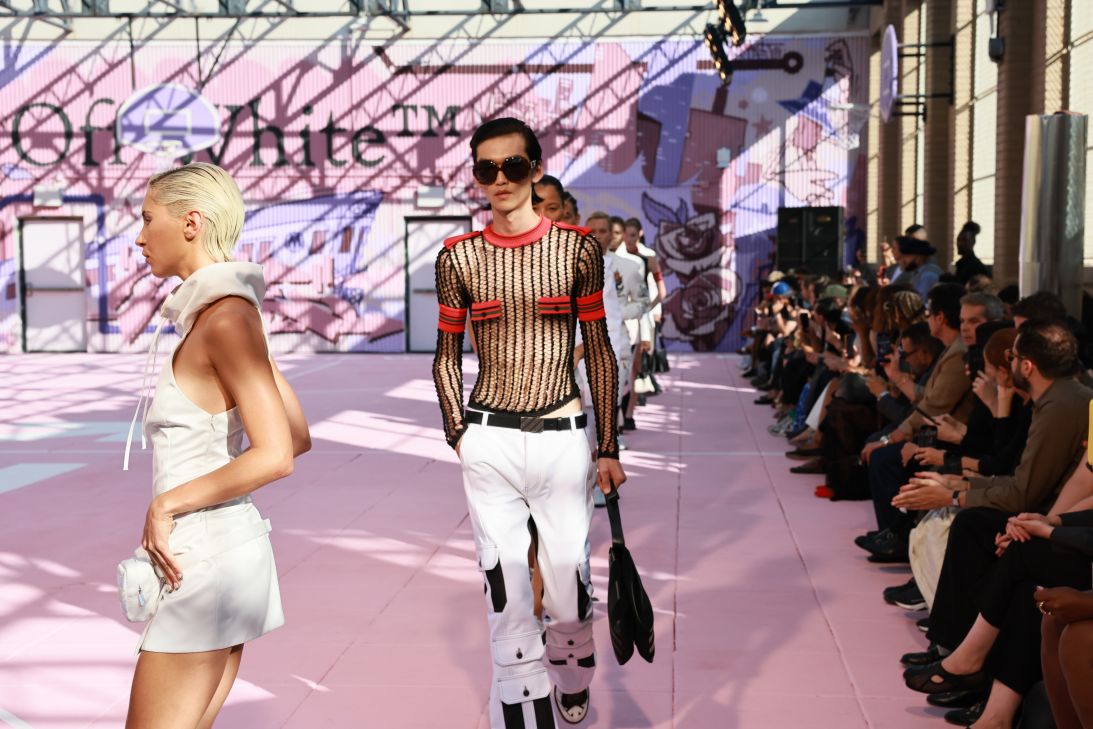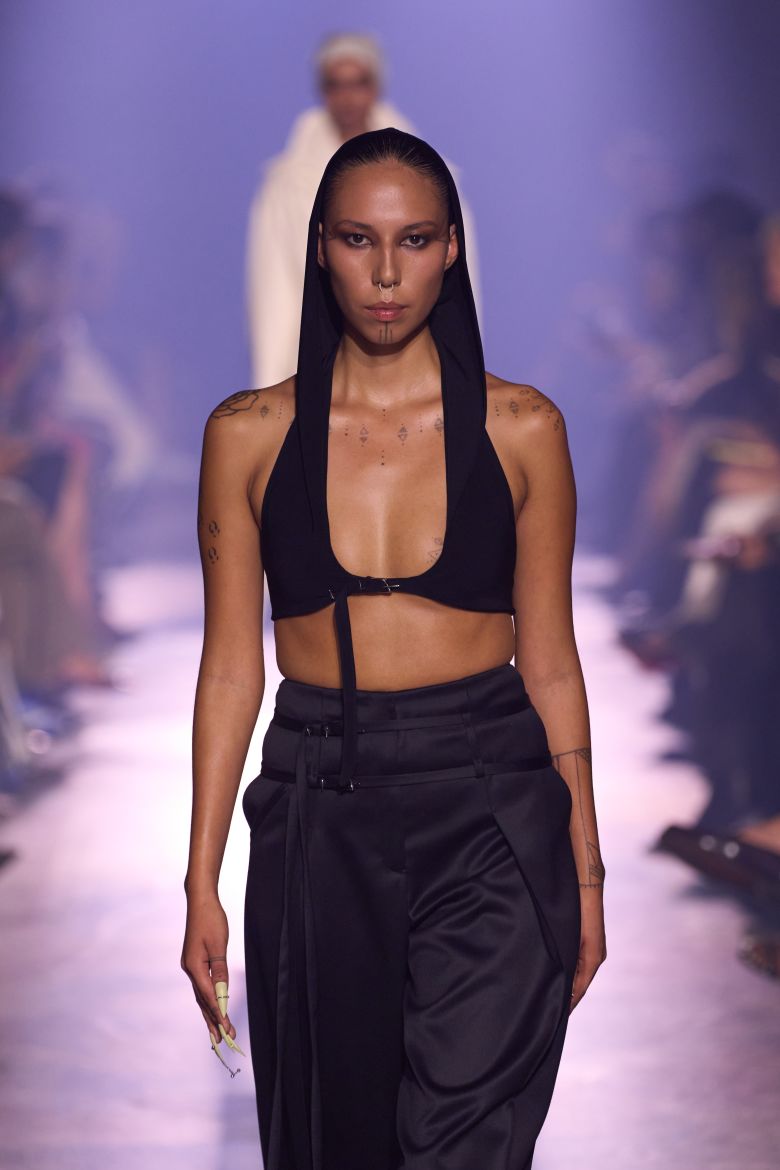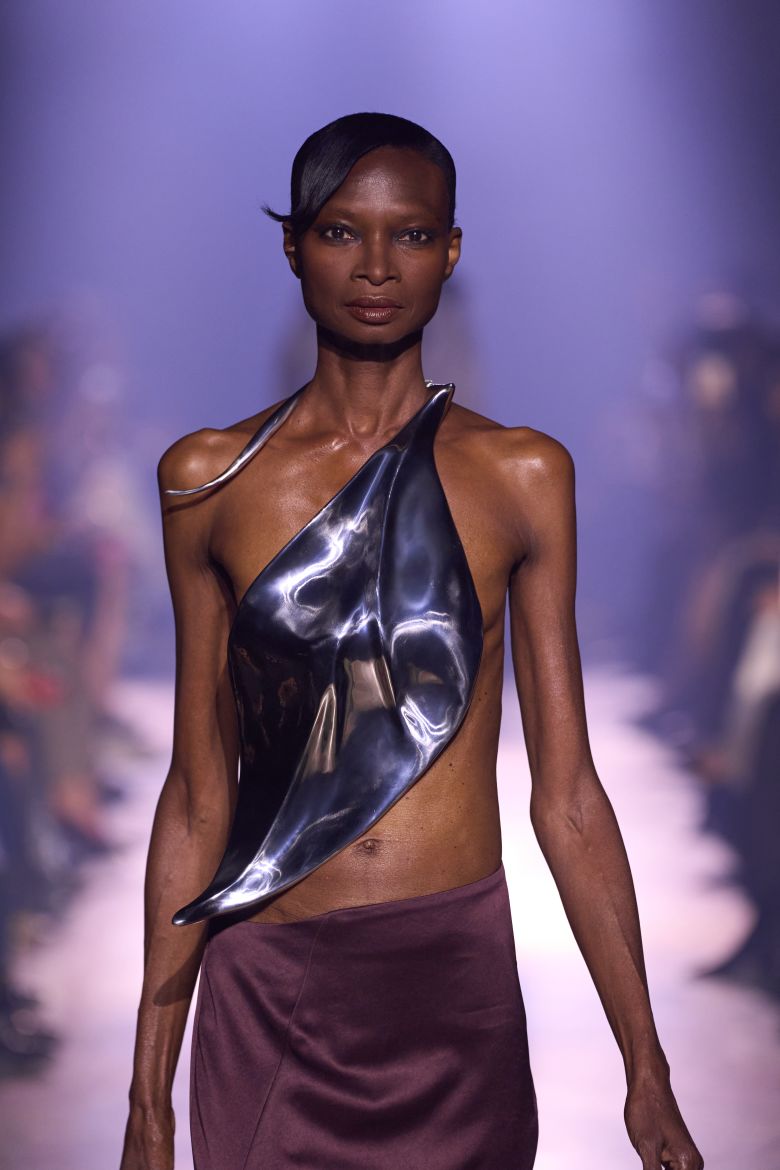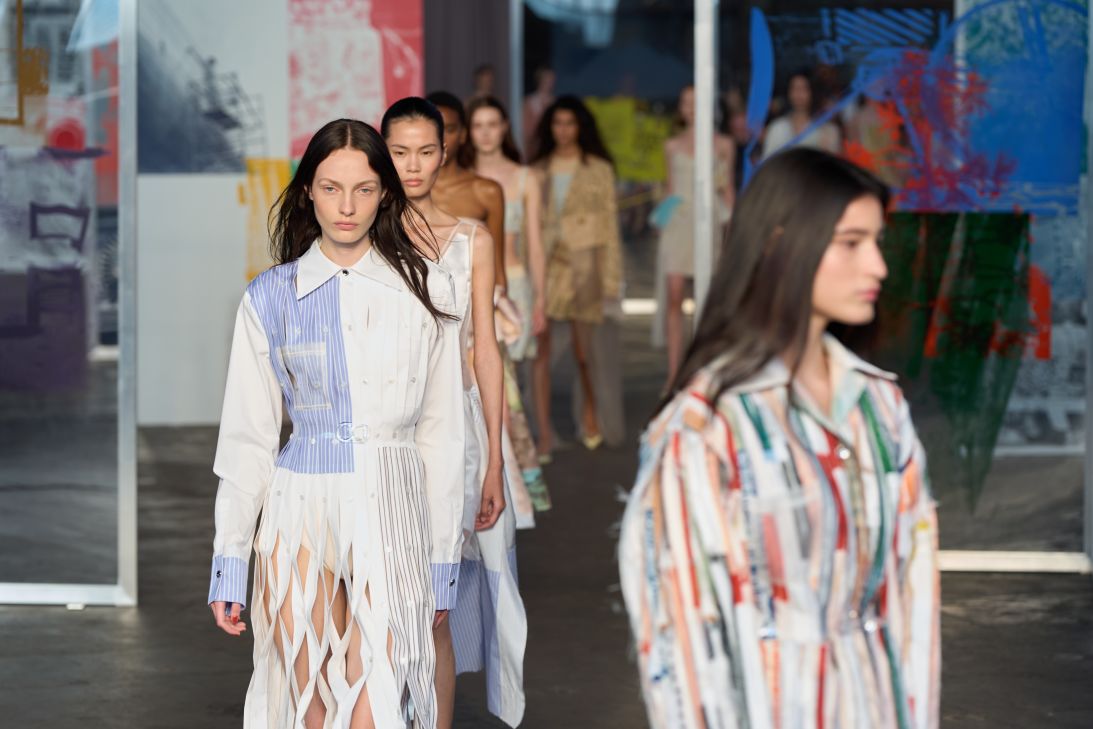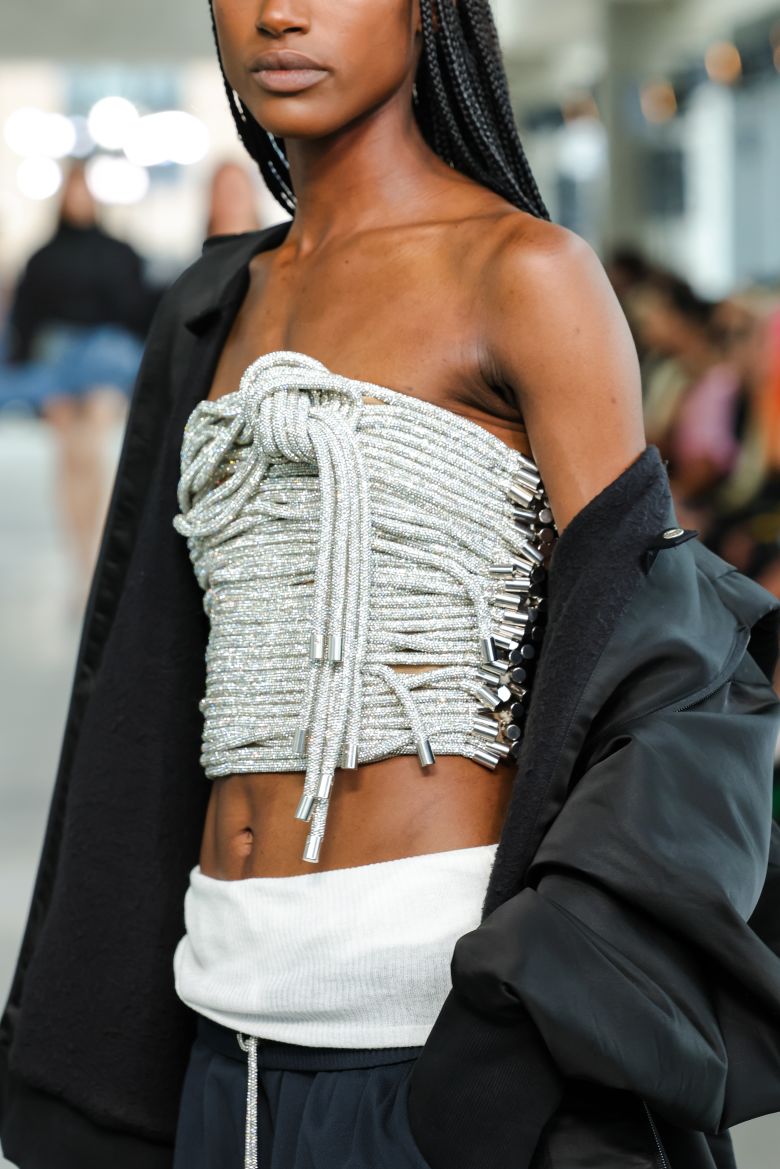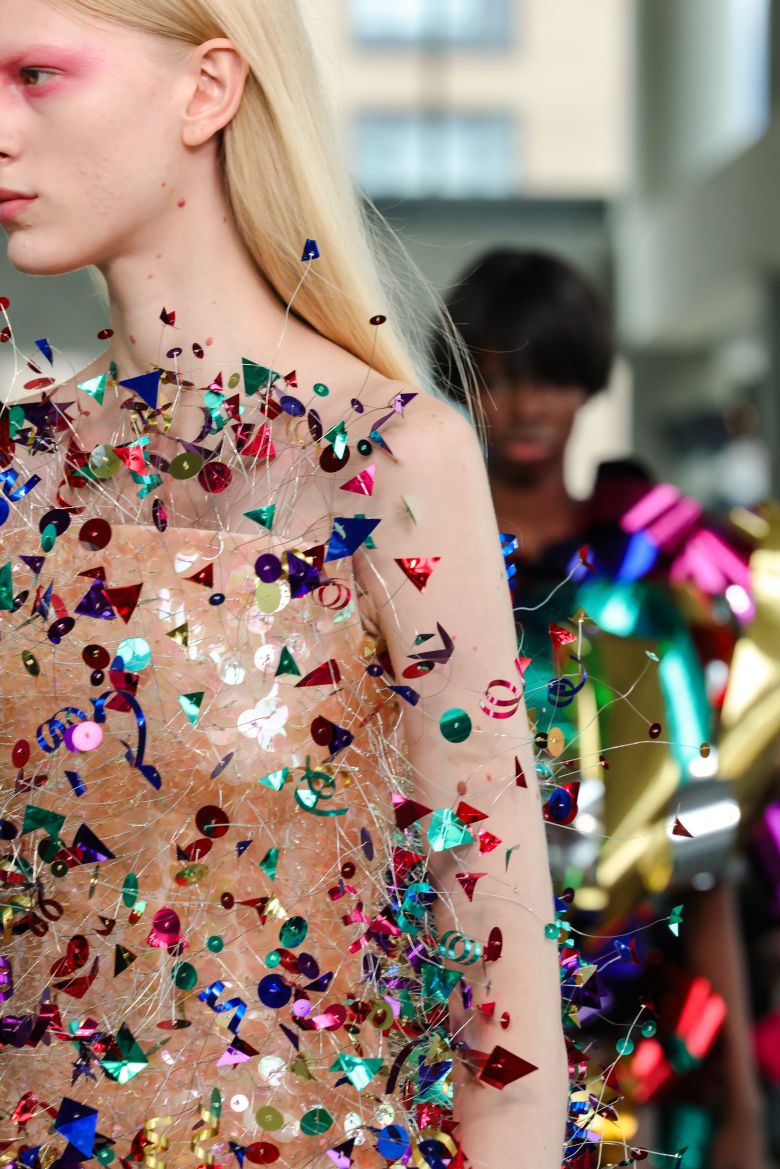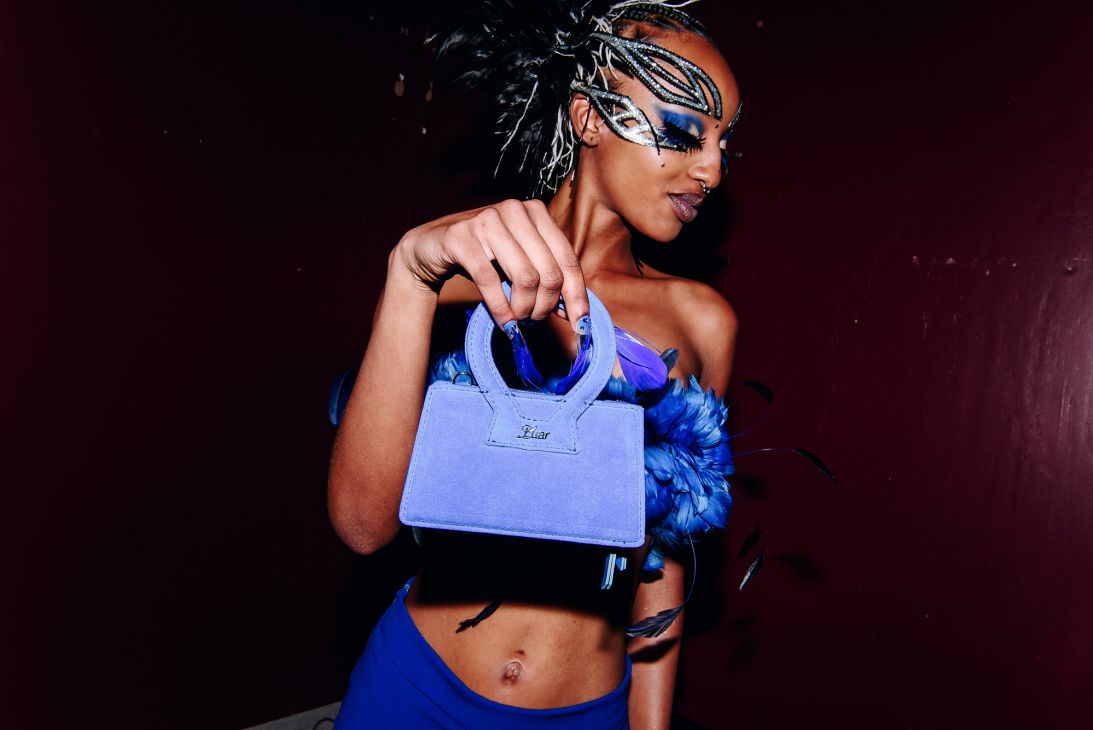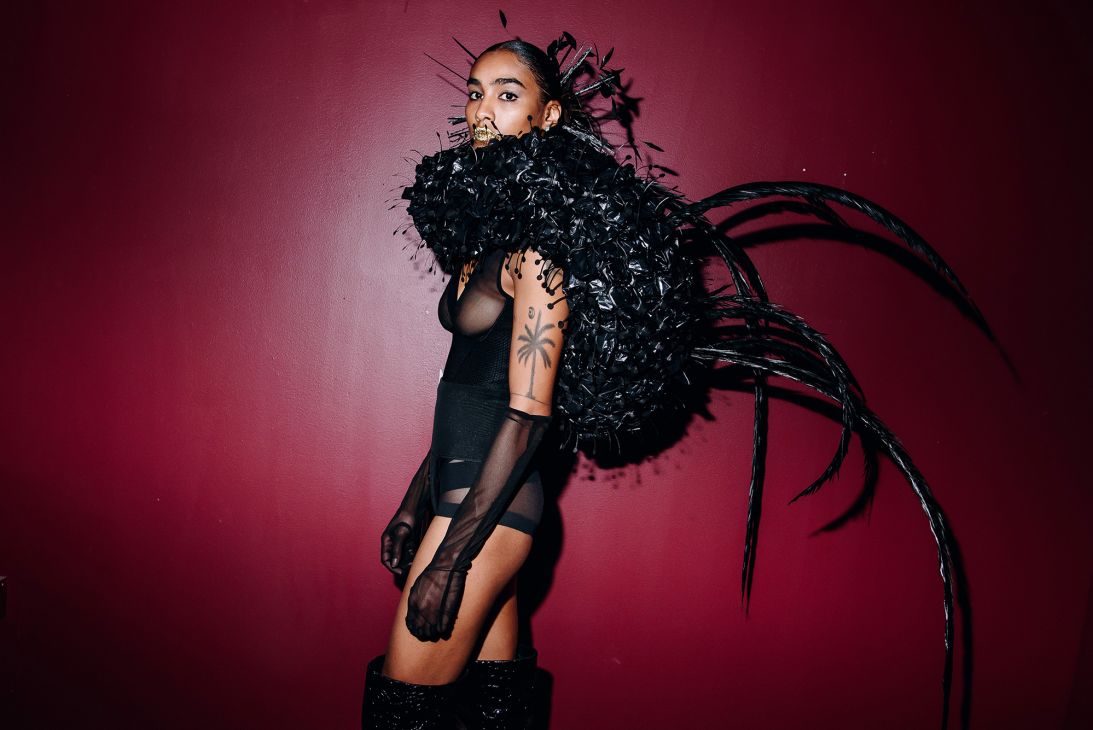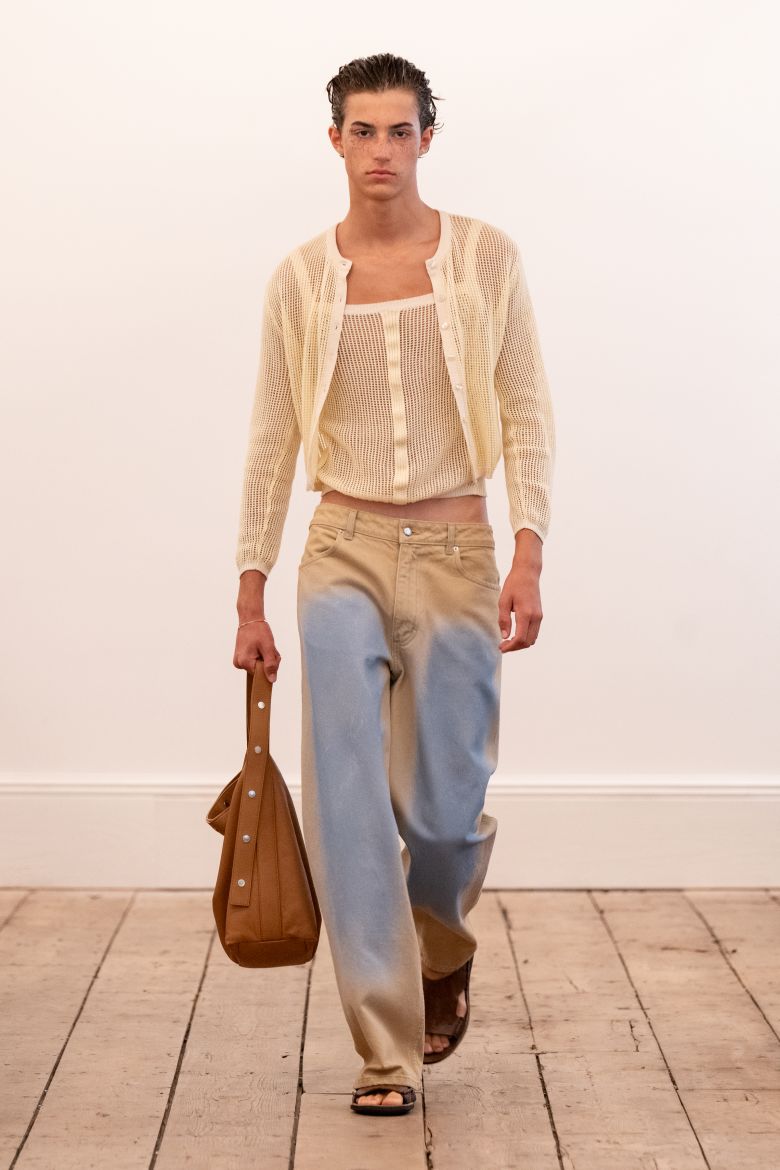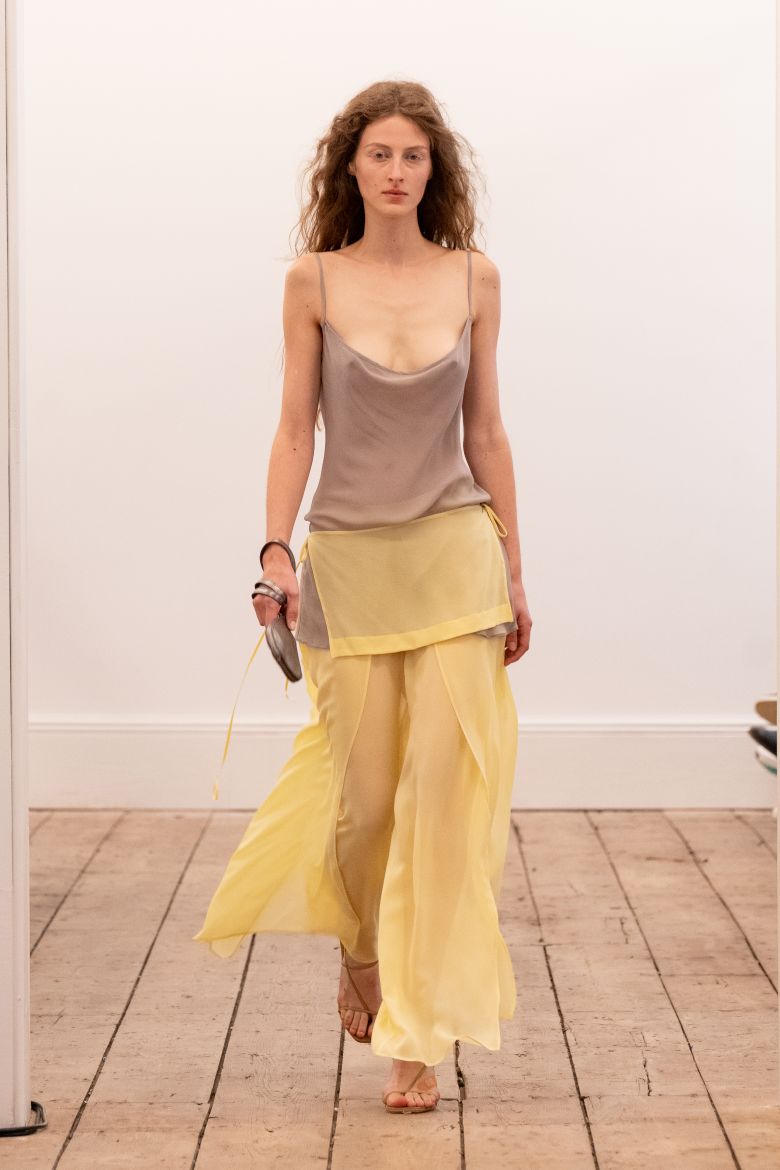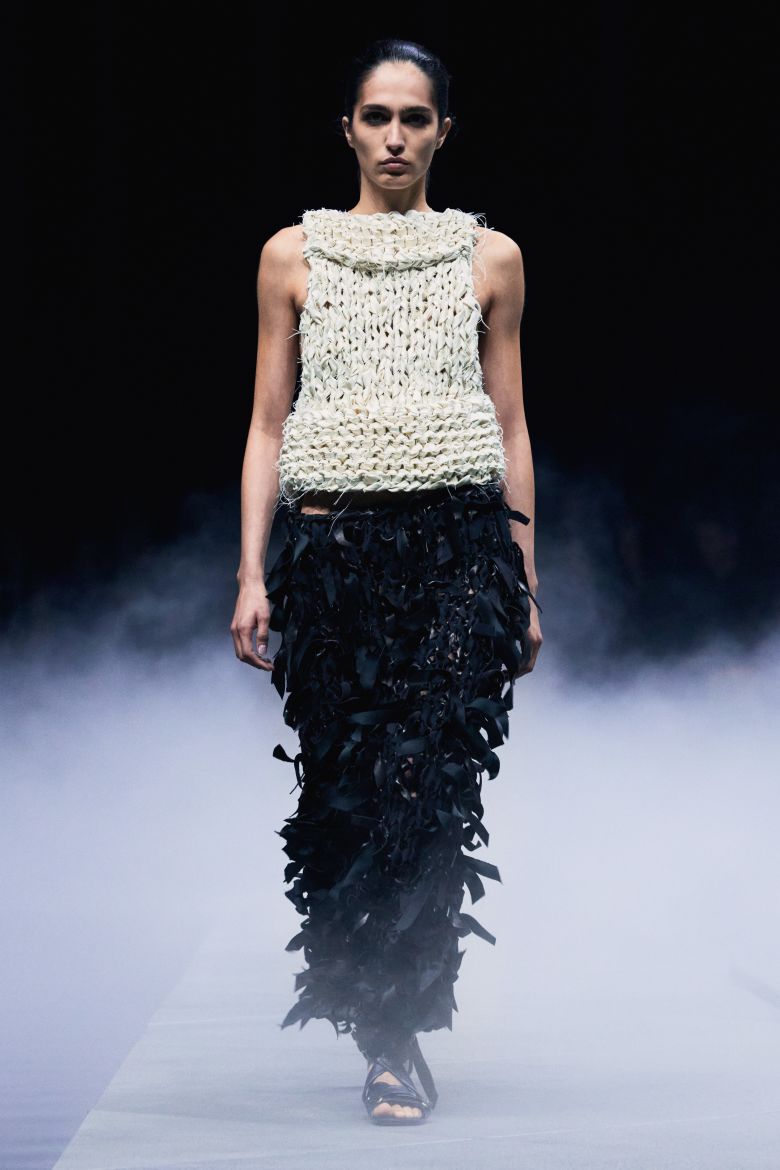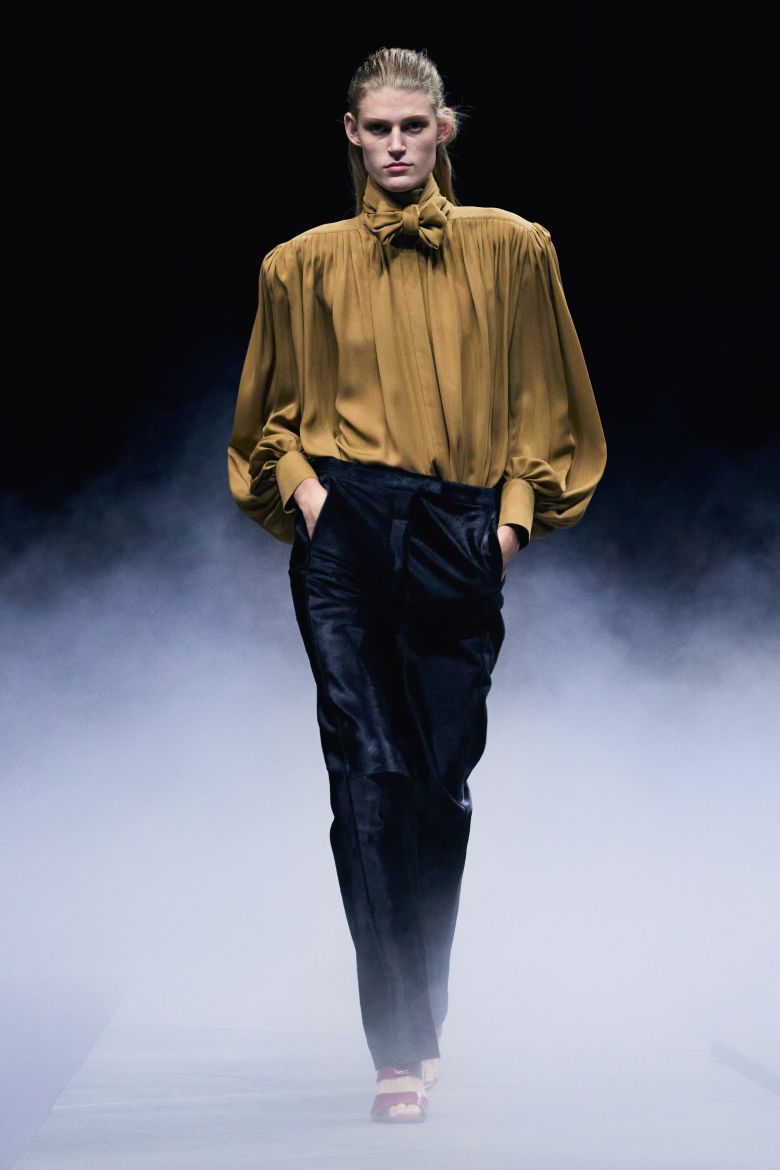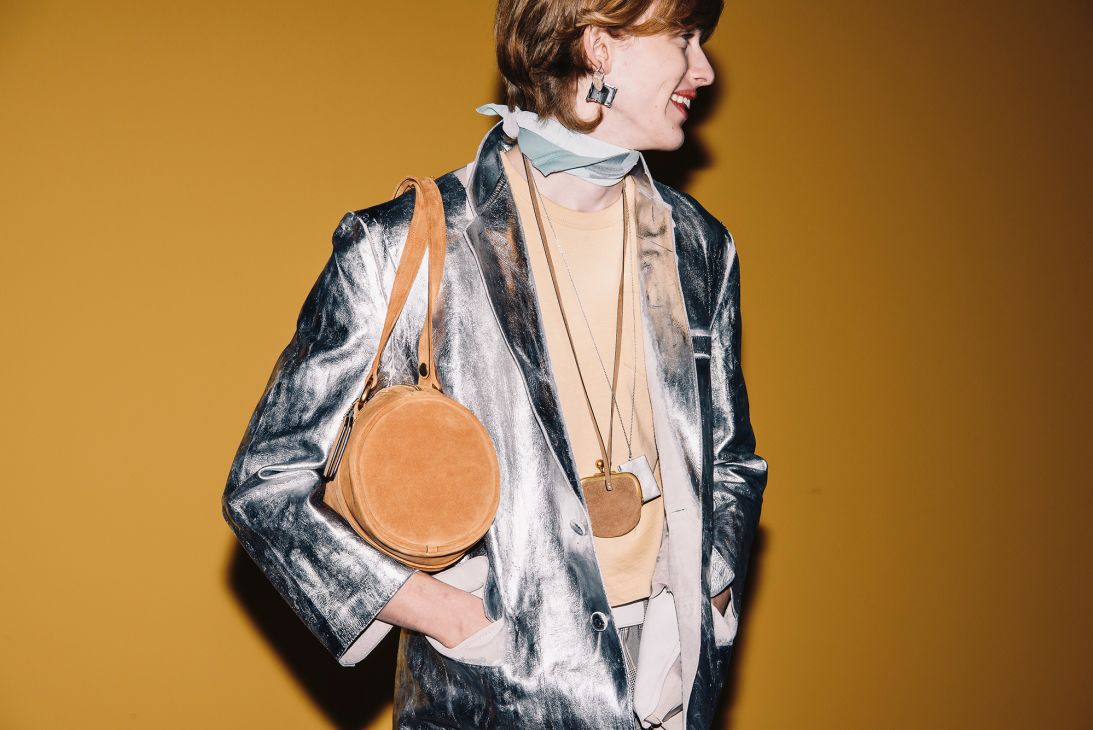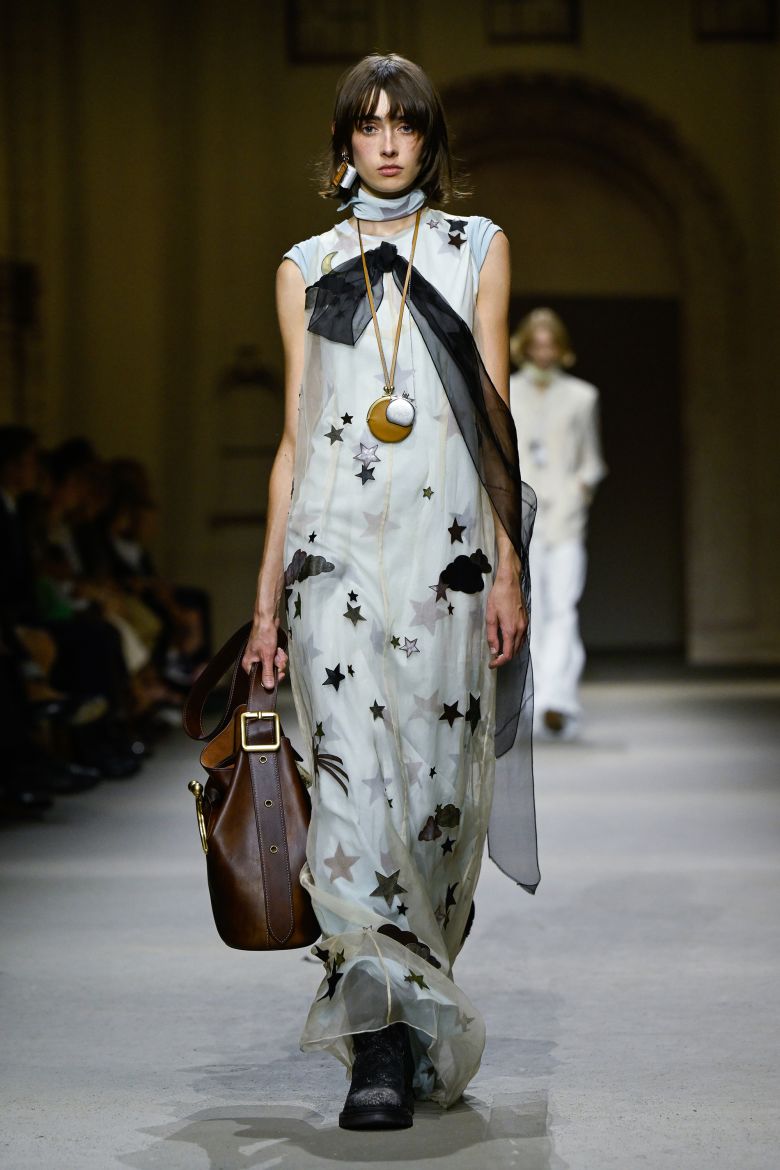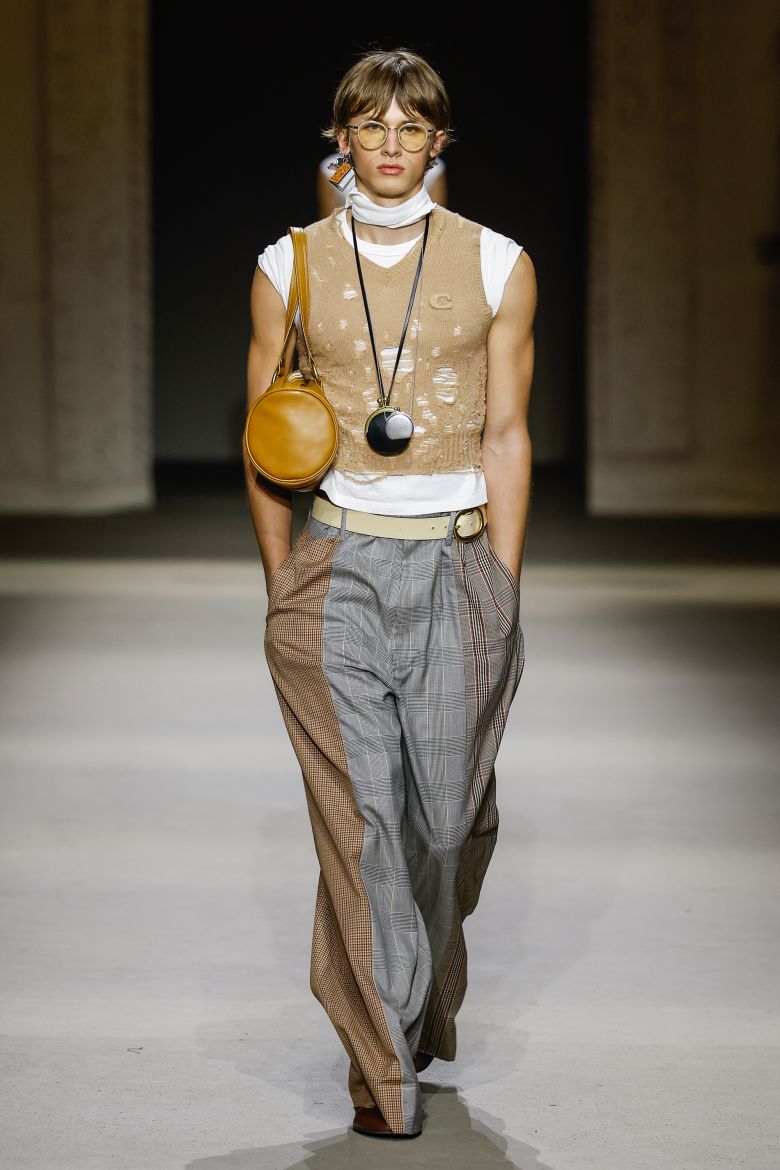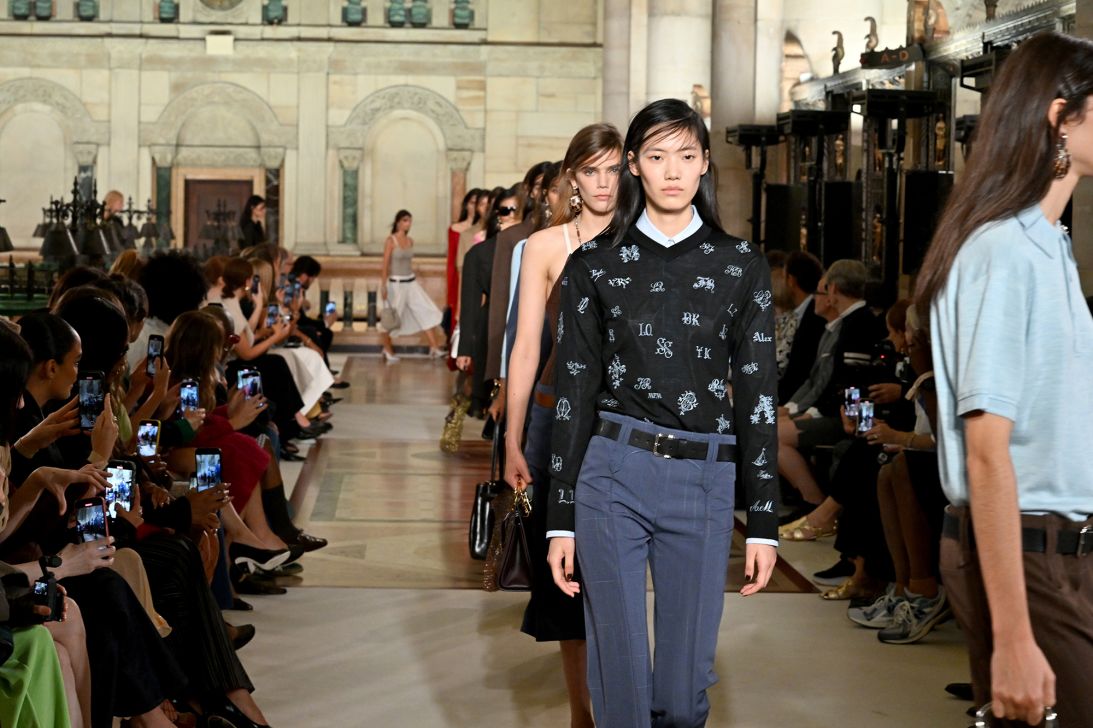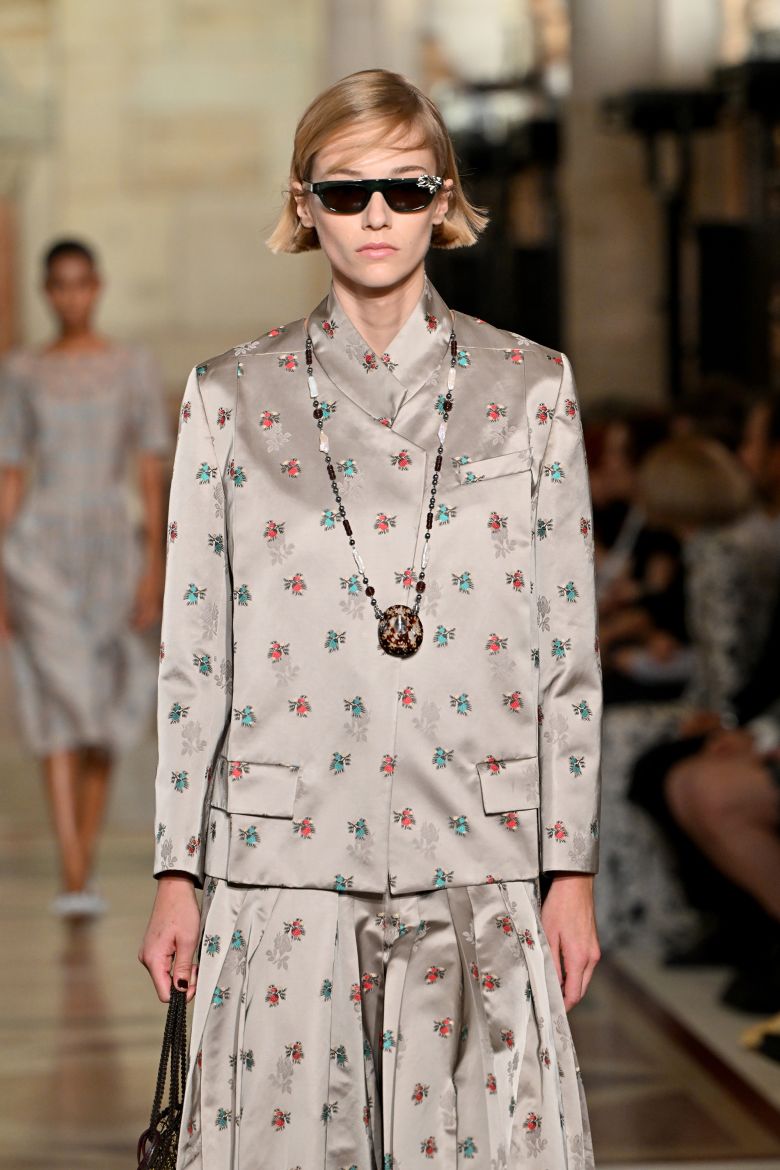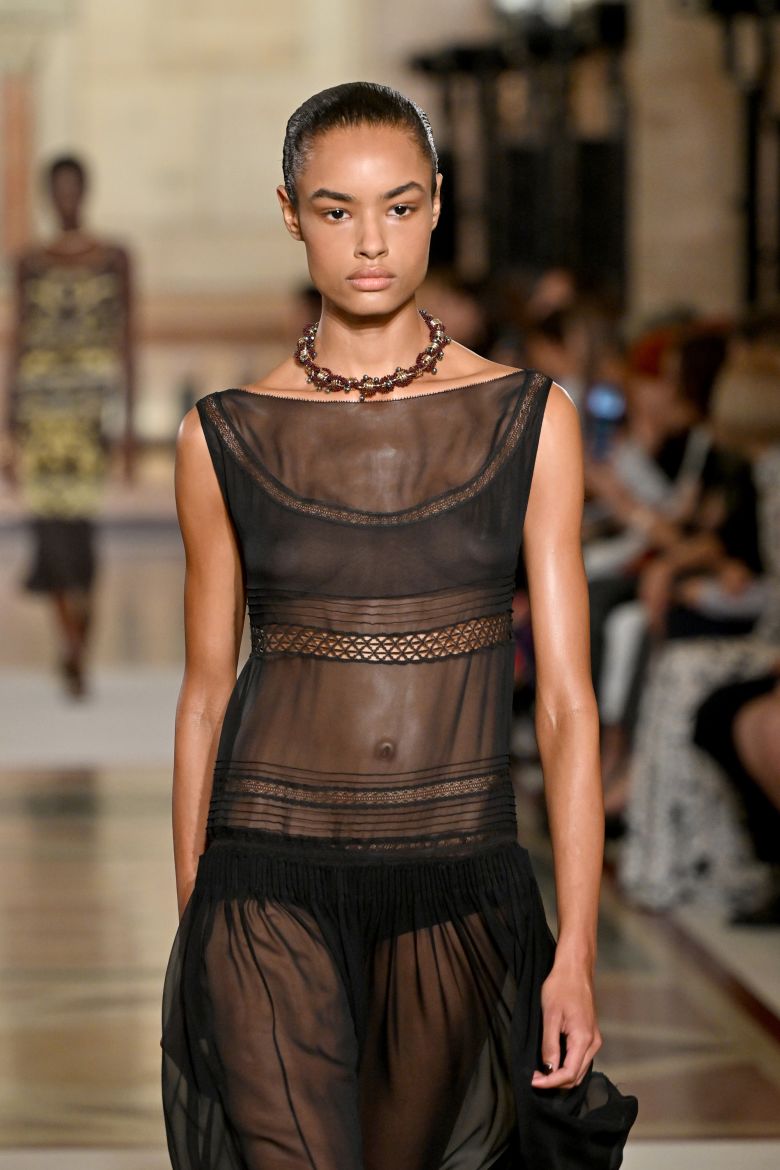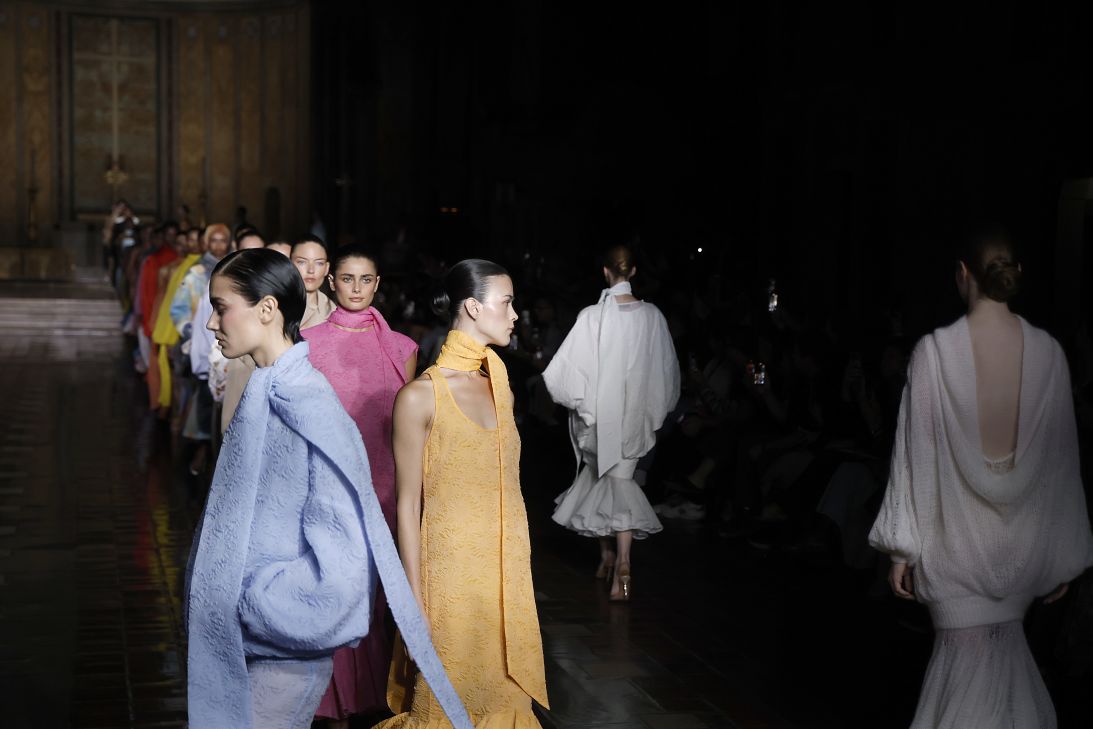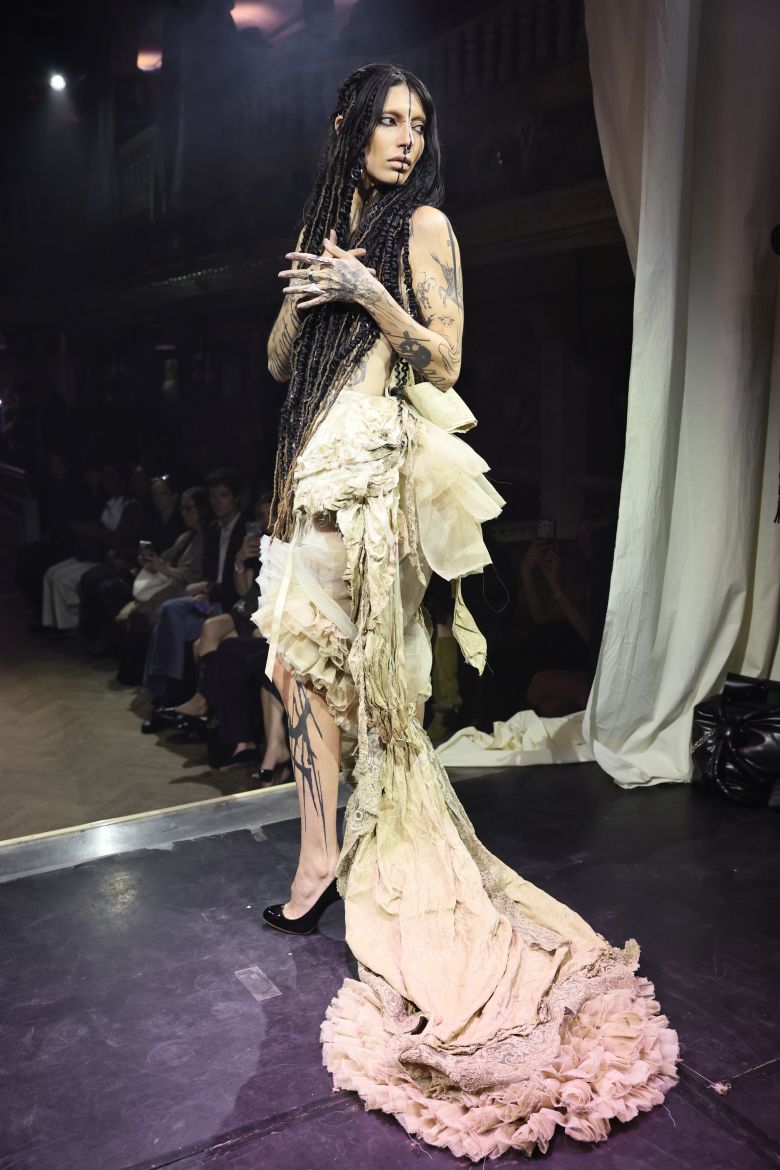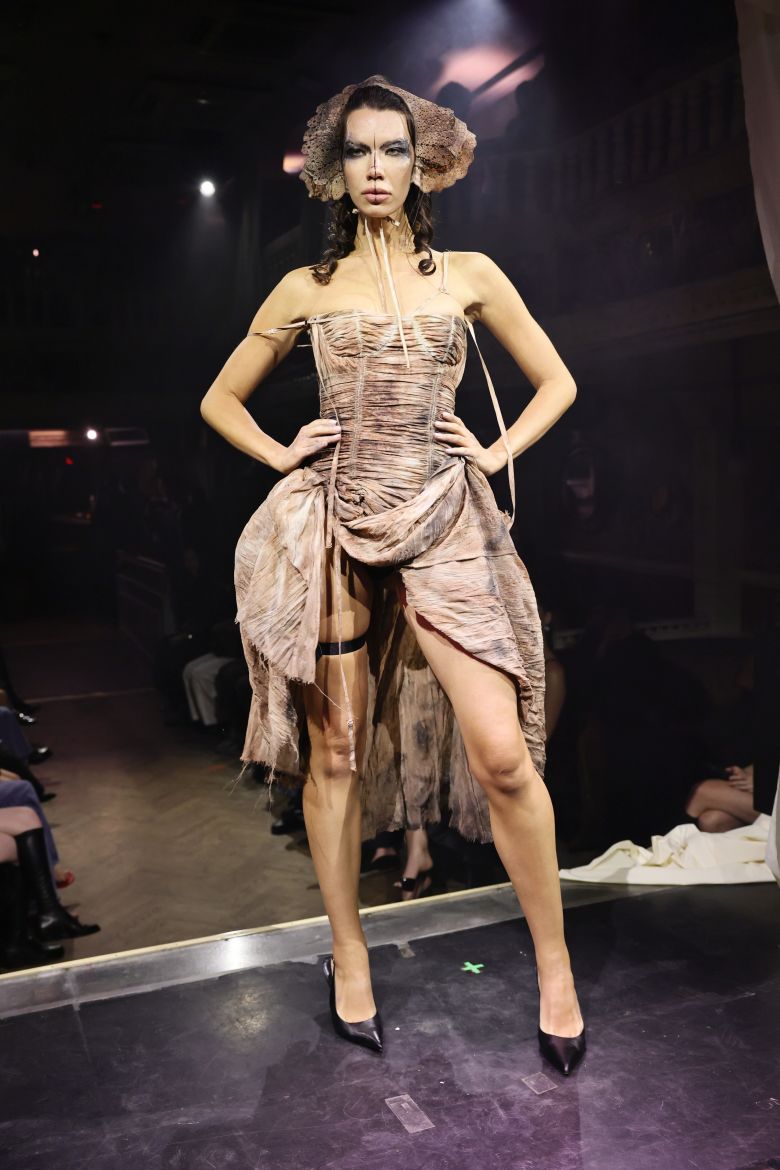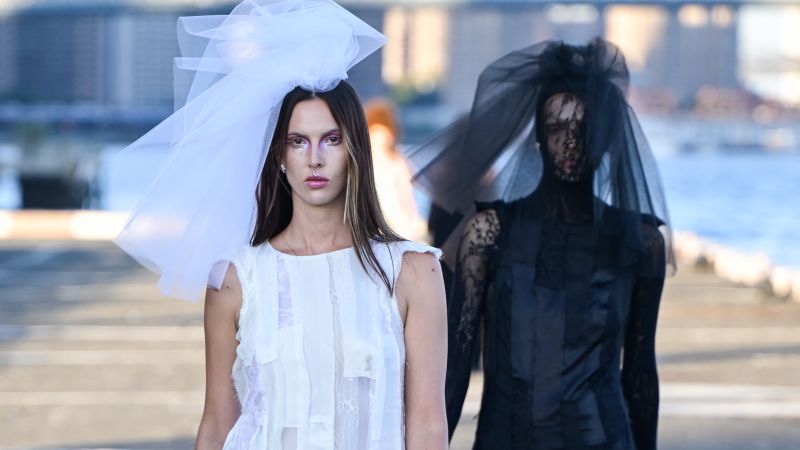Tweet
Email
Link
New York
—
On Manhattan’s breezy piers, inside golden-hour lit warehouses and even in an Episcopal church: such locations served as the venue for runway shows, as New York Fashion Week kicks off a busy fashion month.
While a growing number of influential designers (Ralph Lauren, Carolina Herrera and Marc Jacobs, to name a few) are opting to show outside the official calendar, or not at all, the city still drew big stars to its front rows: see Gwyneth Paltrow and “White Lotus” actor Leslie Bibb at Michael Kors; or singer Rosalía, “Emily in Paris” star Lily Collins, and Jung Kook of BTS — whose fans flooded the streets to see him — at Veronica Leoni’s sophomore collection for Calvin Klein.
Later that evening, another round of blaring car horns sounded in Chinatown as guests attending the Alexander Wang show swarmed a corner of Bowery, where Wang announced he would be turning a former bank into a permanent cultural space dedicated to Asian arts. The show marked a return of sorts for the Taiwanese American designer, who has been largely absent from the schedule since facing multiple accusations of sexual assault in late 2020 and early 2021. (The allegations led to public apologies from the designer and a shift in his market, as he instead focused on brand growth in China and staged an LA show in 2022).
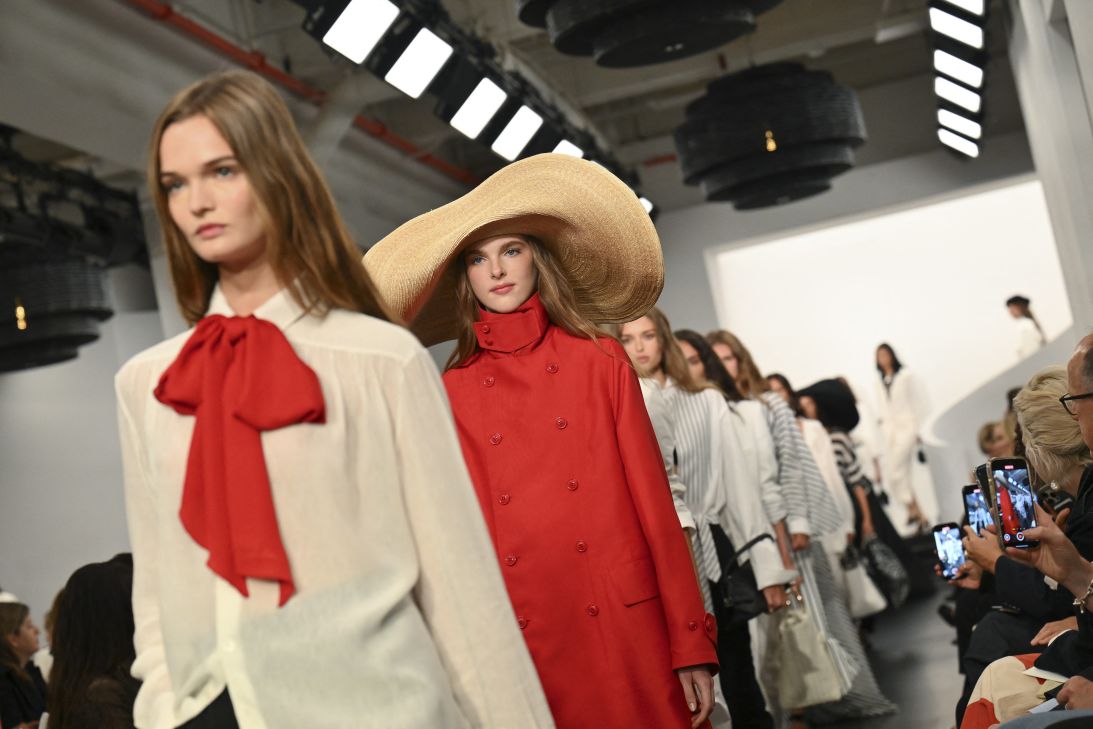
Wang’s latest show, which mixed risqué suiting and clubwear redolent of the 2000s, was attended by Cardi B and her young daughter Kulture, Martha Stewart, stylist Law Roach and “Love Island” couple Nic Vansteenberghe and Olandria Carthen (known to fans as Nicolandria). The show’s VIP guests sat at mahjong tables in the center of the floor, becoming part of the runway.
Other designers leaned into a sense of community. Off-White, designed by Ib Kamara, staged its maximalist, 1970s-inspired collection (modeled by Kobe Bryant’s daughter Natalia, Jude Law’s daughter Iris, and Solange’s son Julez Smith) on the rooftop basketball court of a Manhattan high school. There, he invited street artists to transform the environment with visual homages to the city’s five boroughs.
Rounding out the week, Coach ambassadors Elle Fanning, Charles Melton, Storm Reid and K-pop star Soyeon sat front row for the American heritage brand. Hours later, Jessica Alba, Emma Roberts, Naomi Watts, Tessa Thompson and Mindy Kaling traveled to downtown Brooklyn for Tory Burch. Meanwhile, Vivian Wilson, the estranged daughter of Elon Musk, was cast in several shows, including Prabal Gurung, where she modeled an oversized white knit top and matching mermaid skirt.
Many eyes will be on Europe in the weeks to come, as a number of high-profile designers make their debuts at big brands amid a wider industry reshuffle. But New York also had new talent to welcome: Rachel Scott, founder of the emerging label Diotima, is now also designing for cool-girl brand Proenza Schouler. Early indications of her vision for the latter could be seen at an intimate show in a Chelsea gallery, which she worked on as a consultant, before formally stepping into the role next season.
Meanwhile, Nicholas Aburn’s first collection for the avant-garde label Area featured theatrical party looks as well as more wearable streetwear, though with unexpected twists, true to the brand’s ethos. There were sports jerseys spliced together and sleeves twisted into mini skirts. The final looks were a crescendo of colorful tinsel and bouncing gift ribbon that completely enveloped the models.
Speaking to CNN backstage, Aburn spoke of returning to Area founders Beckett Fogg and Piotrek Panszczyk’s roots, “which is the nightclub.” He said: “It looks like New York to me, because there are these avant-garde, crazy characters, but they’re framed by these normal, chic but quiet people. And that’s what makes New York special. There is this duality: high and low, chic and crazy, cheap and rich.”
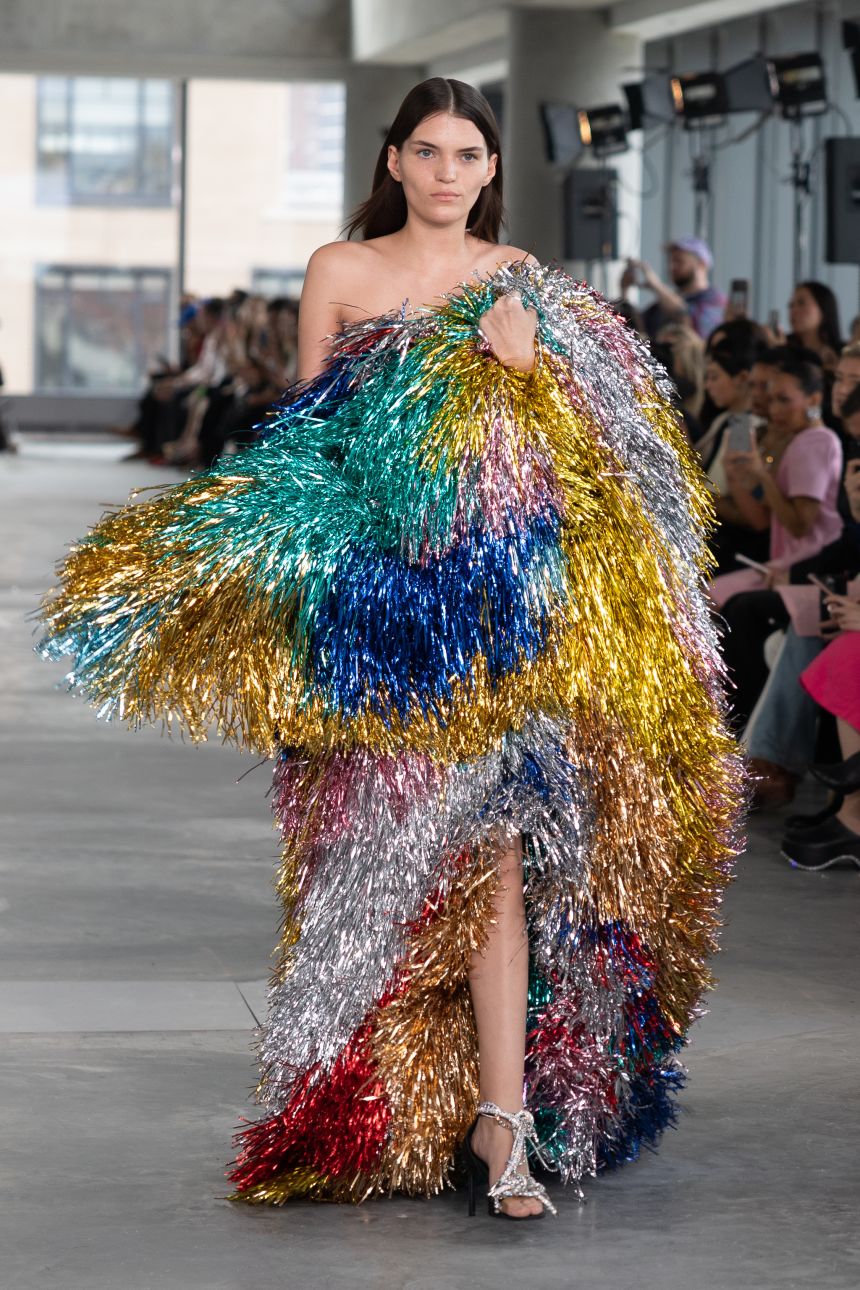
“That’s what makes New York special. There is this duality: high and low, chic and crazy, cheap and rich.”
Nicholas Aburn, the designer of fashion label Area
For Coach’s latest collection, creative director Stuart Vevers also had New York on his mind, and its balance of grit and glamour. Baggy workwear pants, leather staples and plaid blazers in gray, tan and white were designed to evoke the patina of buildings and “that bright morning light that I feel is very special to this city,” Vevers explained to CNN backstage. Accessories included snap coin purse necklaces and clutches as well as dangling earrings made of small (real) books — a reference to the boxes of books and other ephemera residents leave out on stoops to pass along.
At the Collina Strada show, where founder and creative director Hillary Taymour often presents a playful but politically salient concept, models came out in twos. They wore identical looks — except that one outfit was entirely in black. The models in all-black clothes walked closely behind their more colorful counterparts, mimicking their gestures and creating the illusion of a shadow. In the show notes, Taymour explained that the shadows represented “humanity’s darkest impulses,” which “no longer lurk in abstraction; they are taking concrete form.” Rather than dismiss them, “we must befriend our shadow. Bedazzle it, even,” she wrote.
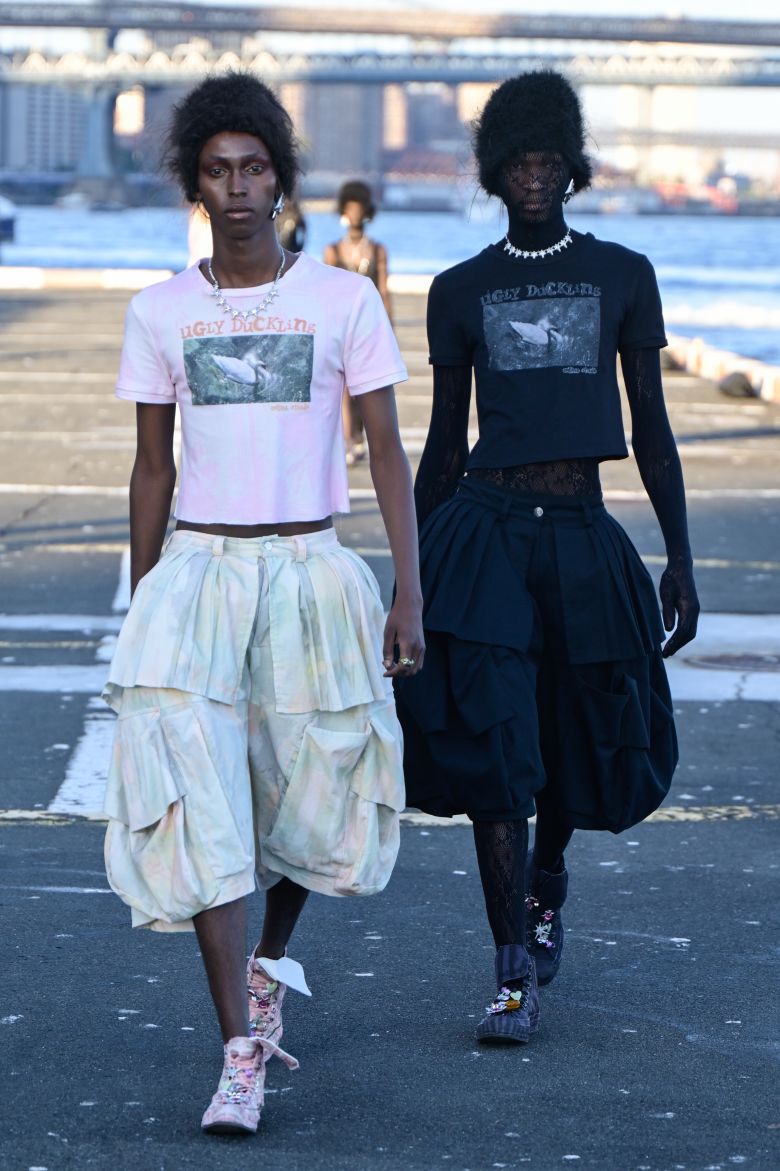
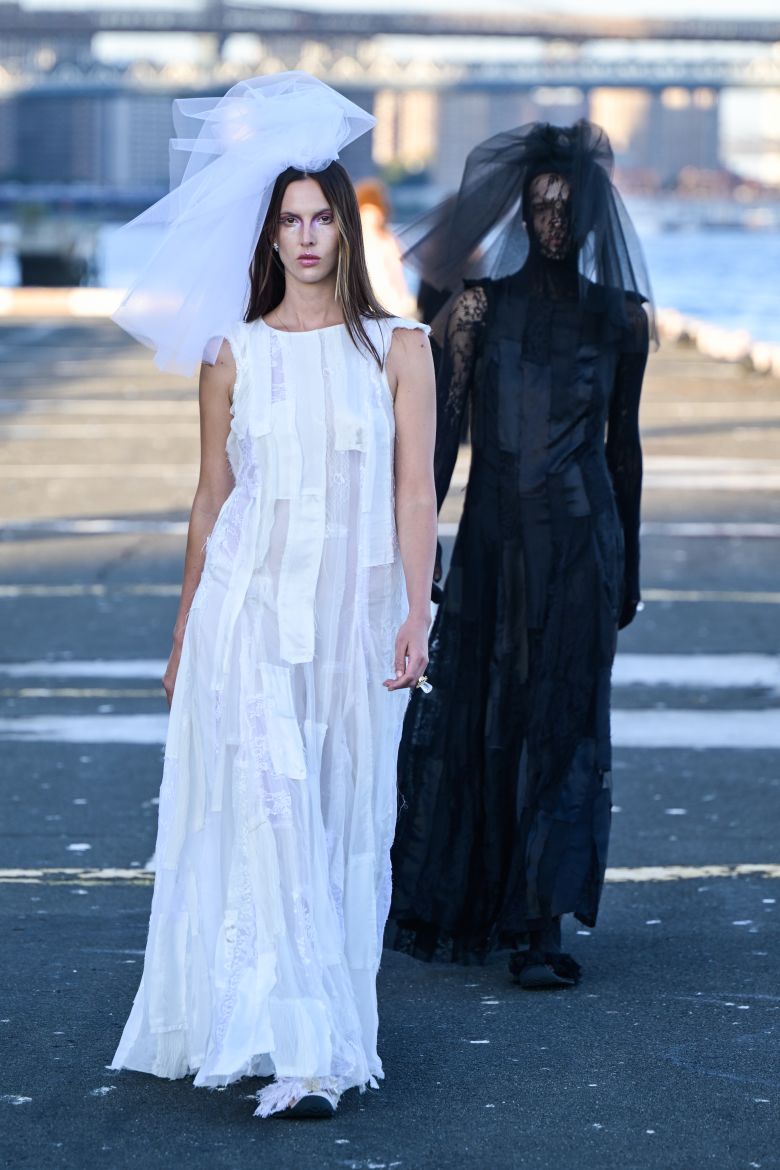
Tory Burch, like other designers during the week, spoke of the importance of designing with a sense of optimism through color and texture. Her collection – which featured the embroidered monogram initials of her design team throughout — explored the “complexity of women,” she said backstage, and “the tension in precision and imperfection and femininity and strength.” Perhaps most representative was her introduction of slingback heels adorned with dainty barbed wire in place of metal links.
Expanding the foundation
Amid a tumultuous fashion landscape, where shoppers are more price-sensitive and spending more cautiously on high-end items, some designers leaned into the familiar, presenting collections that felt like smart extensions of past seasons by building on their signature styles, rather than venturing into the unknown.
“We don’t want to reinvent the wheel every season. I don’t think that’s how we dress.”
Zoe Latta, co-founder of the contemporary brand Eckhaus Latta
At Khaite — which has steadily grown into one of the week’s headlining acts, boasting an A-list front row that included Aubrey Plaza and the season’s first runway appearance by Kendall Jenner — founder Cate Holstein focused on the label’s established symbols of power dressing: bold shoulders, clean lines, exaggerated shapes, limited color palettes and a balance between hard and soft materials. She also toyed with construction, showing flipped hems and asymmetrical gathering. Key items like leather jackets and skirts came in hues of cherry red and mustard, while Jenner walked out in polka dots — fashion’s favorite print of late.
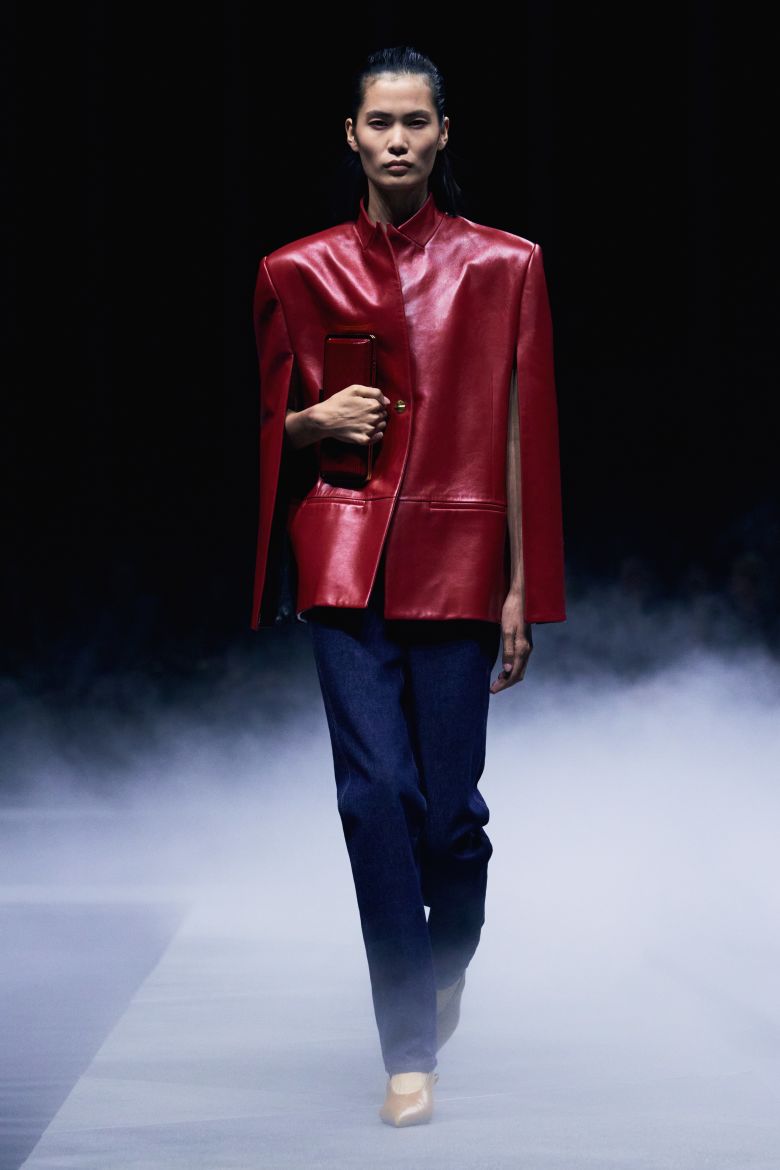
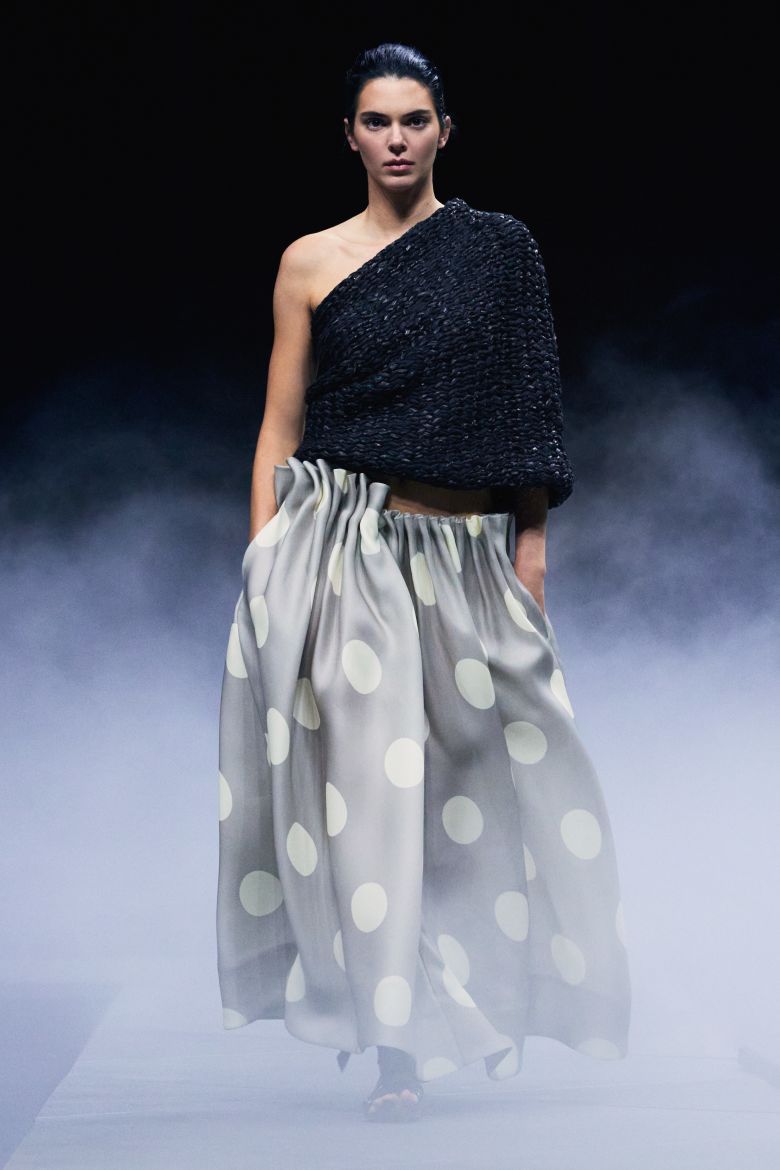
In a hot, third-story gallery space, gender-neutral fashion label Eckhaus Latta presented deconstructed looks — including tees worn by male models with the front entirely cut out. Utilitarian pieces — structured denim sets, belt bags, and shorts zipped open at the thighs — were offset by ultra-sheer knits and mesh. The artist Martine Syms made a guest appearance on the runway, while another model smoked a pre-rolled joint.
“A lot of this collection is like, how we can do what we’ve been doing and make it better,” co-founder Zoe Latta said backstage, following the show. “We don’t want to reinvent the wheel every season. I don’t think that’s how we dress. I don’t think that’s how meaningful clothes really operate.”
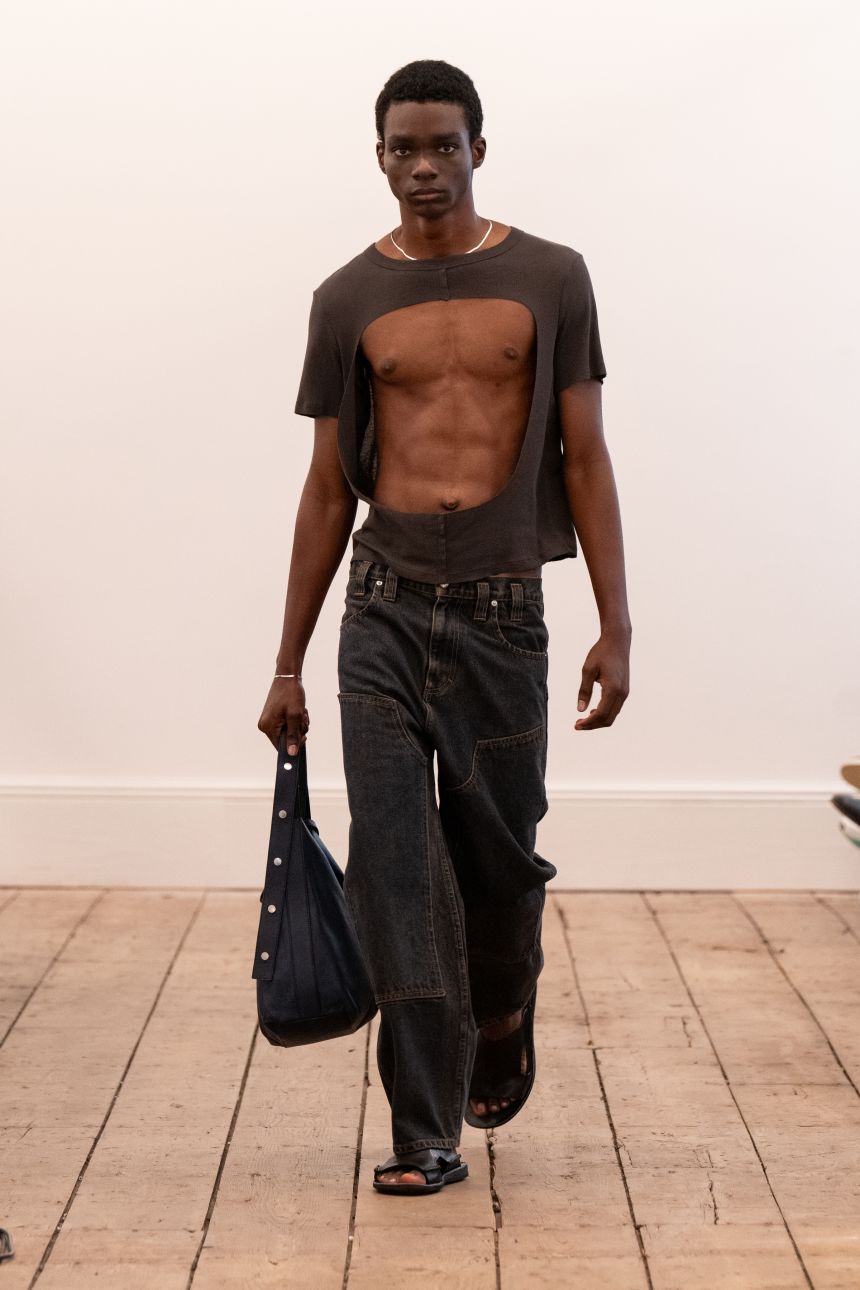
Nearby, the eponymous designer Willy Chavarria returned to New York with a small, intimate show on Wall Street that featured womenswear looks from his latest collection first shown in Paris during the summer. Adding several new pieces for the presentation, which took place in the recently opened Printemps department store, the format harkened back to the traditional salon show. Models in vibrantly hued Zoot suits, trench dresses and wide-brimmed hats held numbered cards to identify the outfits they were wearing for purchase. Their looks were completed with the occasional martini glass in hand.
Scroll to see some of the best moments from New York Fashion Week.
